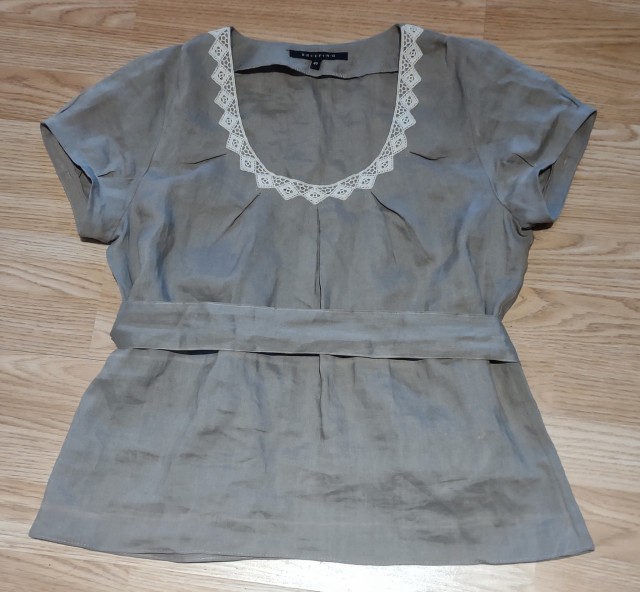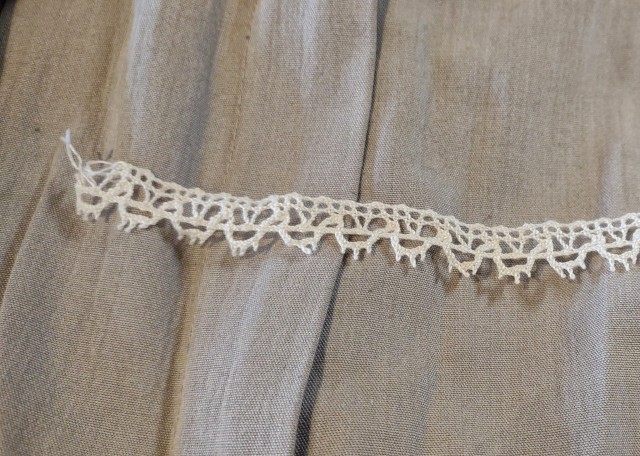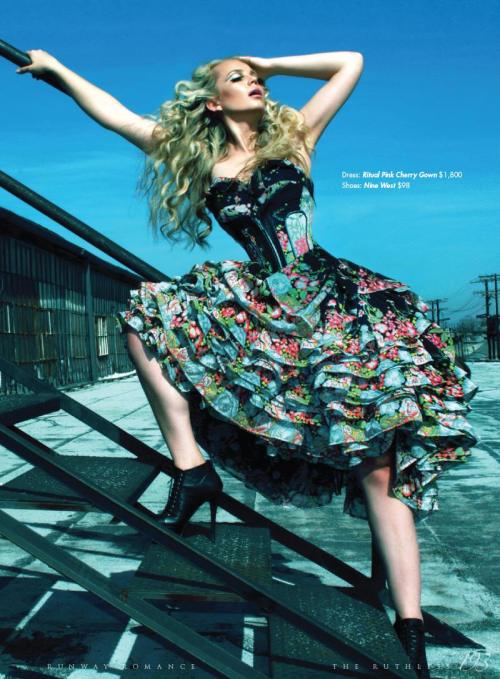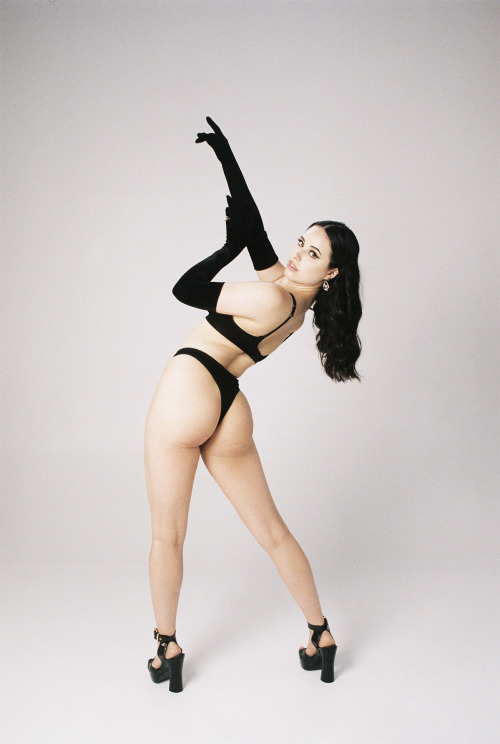#slow fashion
Hello! I am back after about two months of being barely active on here. I had to go to work for some time and then I was taking my final exams at school. I will try to post more from now ;)
I had very little time to declutter at May, so I decided not to make a separate post about it and I decided to put the months together.
Here is the list:
- skirt - gave away
- stuffed animal - gave away
- velvet sweatpants - gave away
- toys - 10 gave away
- pot plants - 6 gave away
- pinafores - 2 gave away
- small bags - 10 gave away
- photo frame - gave away
- a small torch - gave away
- a soap bubble liquid - gave away
- baking plates - 6 gave away
- a thermal mug - gave away
- a soap - gave away
- scribers - gave away
- ink pen - gave away
- drawing charcoal - gave away
- drawings - 3 gave away
- paintings - 2 gave away
- badges - 5 sold, 2 gave away
- a card game - sold a pair of snickers - sold
- Tarot cards - sold
- a T-shirt - sold
- a shampoo bar - sold
- paper folders - 3 thrown away, 1 gave away
- stickers sets - 2 thrown away, 1 give away
- unfinished sewing projects - thrown away
- candles - 2 thrown away
- old receipts - thrown away
- small pieces of old fabric - thrown away
- pair of socks - thrown away
- gift cards - 2 thrown away
- old oil pastels - thrown away
- old (dried) ink - thrown away
- lip balms - 2 thrown away
- a glass box - thrown away
- a lot of sketches and drawings - thrown away (count as 1)old projects (mainly printed graphics) - thrown away
- notebooks - 15 thrown away
- notebooks covers - 5 thrown away
- old documents - thrown away
- trousers - thrown away
- calendars - 2 thrown away
- magazines - 6 thrown away
- a newspaper - thrown away
- a book - thrown away
- a cup - thrown away
- puzzles - thrown away
- small pendant - thrown away
- organiser box - thrown away
- a piece of underwear - 1 thrown away a bottle of expired shampoo - thrown away (I wanted to use it up, but I got rash…)
And for now it is 679 of 1000 things.
I will publish another post about decluttering soon where I will sum up my experiences after decluttering for half a year ;)
Thank you for staying with me!
RITUAL is a fashion music and film project run by pictured above Jillian Ann + Cassidy Haley this is from the current DARK BEAUTY MAGAZINE ISSUE 34: Burning is here!
Preview/Buy the new issue at bit.ly/DBM_34
to learn more about RITUALS new projects
http://www.MakeLifeARITUAL.com
shot by the amazing sequoia emmanuelle
Post link
“The RUTHLESS” spread - RUNWAY Fall Summer issue!
Photographer: Josef Jasso
Makeup: Necee Wilson
Hair: Leanne Marie Hare
clothes by Ritual
http://www.MakeLifeARITUAL.com/
Special thanks to HQ Avalon Studios
Chad Schollmeyer
special thanks to Marq Mendez @ MDM Models Direct Management
Garret Taylor Richard Rocco Marvin Williams
@diesel Jillian Black Jillian Ann Case Hale
thanks to
Runway Archives & Showroom Alexandra Lerma Mikey Cuttingedgebeauty
Post link
BONUS shots- “The RUTHLESS” spread - RUNWAY Fall Summer issue!
Photographer: Josef Jasso
Makeup: Necee Wilson
Hair: Leanne Marie Hare
Corsey and body suite by Ritual
http://www.MakeLifeARITUAL.com/
Special thanks to HQ Avalon Studios
Chad Schollmeyer
special thanks to Marq Mendez @ MDM Models Direct Management
Garret Taylor Richard Rocco Marvin Williams
@diesel Jillian Black Jillian Ann Case Hale
thanks to
Runway Archives & Showroom Alexandra Lerma Mikey Cuttingedgebeauty
Post link
The Benefits of Sustainable Shopping
→http://ecogreenlove.com/?p=14345Now more than ever, customers look for sustainability when shopping, despite the increase of damaging industries such as fast fashion, which are overproducing and polluting. This is because of the many benefits that sustainable shopping offers, including the lack of slave labour, fewer pollutants and of course, the use of organic and renewable materials.
-
#environment #fashion #sustainability #ecofriendly
#clothing #consumerism #consumption #fashionindustry #fastfashion #organic #pollution #reduce #sustainability #waste
Post link



“Sapho on the rock of Lefada” embroidered on handmade jeans


Demon Girl costume- sewed most of it last night!
(She/her)
The Horrible Aftermath of the SHEIN-pocalypse (Salem Tovar)
Project: ramie dress refashion
Introduction:
I’ve got this ramie dress that doesn’t really suit me. It fits, but the shouldersare too wide and the skirtpart looks weird on me. I usually wear skirts with a lot of volume because skirts without it look wonky because of my scoliosis.
The fabric’s lovely though, so I decided to rework it into a shirt.
The project:
The dress is made out of a woven fabric. It has no closures and is meant to slip over your head. The short sleevesand rounded collarhave been shaped with pleats. It came with a sashto be worn around the hips, which I forgot to photograph.

[ID: a light brown ramie dress hanging from a wooden hanger in front of a white background. The dress has short sleeves and a round pleated collar.]
I indicated my waistandhipson the dress with a chalk line, then drew a third line about 5cm below the hips to serve as seam allowance.
Icut off the bottom of the dress at the third line.

[ID: a light brown dress lying on a black and white chequered floor. Three horizontal pink lines have been drawn on it with chalk: one at the waist, one at the hips, and one 5cm below the hips.]
Theshoulderswere slightly too wide for me, so I used a small pleatsimilar to the ones used at the neckline and sleeves to make them smaller. This made the top much more flattering on me. I also hemmed the bottom edge.

[ID: a light brown dress lying on a black and white chequered floor. The skirt part has been cut off right below the hips.]
I put the project aside for a while to think about embellishmentsas the top was rather plain, and ended up settling for a lace trim at the neckline.
I recently received a parcel of leftover lace from a fellow sewist who was clearing out their stash, and found the perfect beige lace trim. The colourwas lighter than the original fabric, but complimentedit well. I had just the right amount for this project.
If you’re looking for cheap/free notions, do as I do and look around in buy-nothing groups and on second-hand sites. You’d be surprised what you’d find. This particular parcel cost me €15 and contained almost a kilo of high quality lace. It’s a win-win situation: the seller got some of their money back, I have enough lace to last me ages, and these trims actually get used instead of thrown away.

[ID: a light brown shirt lying on a wooden floor. The bottom edge has been hemmed, and beige pointy lace has been sewn around the rounded collar.]
I still had the original sash from the dress. I was considering sewing it onto the top at fist, but I decided to keep it separate. That way, I can both cinch the top at the waist or keep it loose and tuck it into high-waisted pants or a skirt.

[ID: a light brown shirt lying on a wooden floor. The bottom edge has been hemmed, and beige pointy lace has been sewn around the rounded collar. A sash lies on top of the waist of the top and has been tucked underneath the top.]
All done! All it needs now is a good washto get rid of the chalk lines.
Theexcess fabric is now in my sewing stash: it’s great quality, so I’m sure I’ll find some use for it.
Conclusion:
There was nothing wrong with the original dress, but I just didn’t wear it because I didn’t like how it looked on me. Instead, I now have a topthat flatters me and goes well with the rest of my wardrobe. It’ll get much more use this way.
Hem Your Jeans In 2 MINUTES! (Stylish D)
Fast fashion and crochet
While we’re on the topic of crochet:
Please know that, unlike knitting, crochet cannot be manufactured by machines. This has a few consequences.
Labour exploitation:
Labour exploitation is rampant in the fast fashion industry: without it, the industry simply would not exist.
This means that if you see a genuine crocheted piece in a fast fashion shop, it was made by hand by someone who was paid peanuts for their labour, if paid at all.
Fibre crafts are very labour-intensive. This is why crocheted/hand-knitted items by indie designers are priced the way they are: you’re notjust paying forthe materials. You’re also paying for the hours that were needed to design and make the item. Even if the designer were to price those hours at minimum wage, they still add up.
Fast fashion strives to manufacture items as cheaply as possible. A lot of different things make up the final priceyou pay at a shop, such as design, materials, shipping, packaging, marketing,… Labouris only a fraction of that price, and garment workers rarely get paid a living wage as to keep the prices down.
Take this seven part TikTok breakdown of a crocheted Target bikini top by Drea’s Hook, for example. After replicating part of the top, she estimates it would take about 3 hours to crochet the full item by hand (and it was crocheted by hand). That doesn’t even account for the materials, the labour needed to sew the lining and the tag, the design, shipping, stock photos,… Yet it only costs $22. If the person who crocheted the top was paidat all, it can hardly have been more than a few cents.
Stolen designs:
On top of labour exploitation, there’s been multiple scandals regarding fast fashion brands stealing designs by independent crochet artists such as Knots & VibesorLoupystudio, among others.
Design theft not only profits off the work done by the original designer withoutany form of compensation in return, it also devaluesthe work needed to make an item.
Theaverage person doesn’t know how much work goes into making clothes. When fast fashion brands knock off original designs and sell them for a fraction of the price, it propagates the idea that the original item was priced unfairly. After all, why would someone charge €250 for a sweater when you can buy a similar one for €15 at H&M? This way, the industrykeeps getting away with exploitingits workers while indie designers struggle to get by.
Caneveryoneafford to pay that €250? No, of course not. Even that €15 sweater can be a big financial hit if you’re on a budget, and we all need clothes to keep us warm in winter. But practical issues aside, I think we can all agree that everyone deserves fair compensation for their work.
Conclusion:
People often assumetheir clothes have been made by machines. This is a logical assumption given the average fast fashion price tag, but unfortunately it’s a wrongone.
Sure, we’ve got sewing and knitting machines and all other kinds of mechanical helps, but someone still has to work those machines. When an item has to be made by hand, like crochet, it will take longer. If the price tag doesn’t reflect this extra labour, then neither will the worker’s wage.
This blog will never shame anyone for buying fast fashion. Even if you’re aware of the problems within the industry, there’s plenty of valid reasons why quitting just isn’t an option for most of us. We’re stuck in a broken system that we cannot change overnight, and not everyone has access to alternatives.
That doesn’t mean we can’t chip away at it.Educating yourself about these issues is a big first step. It makes us more conscious about the clothes we wear and the labour and resources that went into making them, which in turn motivates us to take action. If more people were aware of these problems, the industry would be much less likely to get away with them.
Project: lacy shorts
Introduction:
I’ve had this old pair of high-waisted shorts for years. While I love them, I don’t nearly wear them as much as I’d like because they’re rather plaincompared to the rest of my wardrobe.
My closet has a lot of frilly lacy things these days, so I figured it was time to update these shorts to make them match the rest of my clothes better.
The project:
This project was simple: I just looked through my lace stash for a trim that would be a good match to my shorts, decided on the placement, and sewedit on.

[ID: a pair of beige high-waisted shorts lying on a wooden floor.]

[ID: an end of off-white cotton lace lying on top of beige fabric.]

[ID: a pair of beige high-waisted shorts lying on a wooden floor. Off-white lace has been sewn along the pockets, the edges of the legs, and the sides near the shirred parts of the waistband.]
Conclusion:
If you’ve got clothes you love but never wear, ask yourself why. Sometimes the solution can be as simple as embellishingthe item to fit your styleagain.
All I did was add some lace to these shorts to make them feel brand new and to make them easier to combine with the rest of my wardrobe.
Projects like these are why I never throw out lace. Aesthetically speaking, it’s not everyone’s cup of tea. But if you like it, it makes for a veryversatile tool to update clothesandhide imperfectionswith.
PS: I’ve got an Instagram that will be covering all the things I make that don’t fall under Call Me Cornelius. I’m “branding” such things under the awesome name of Elijatude. Along with this, I’m going to try and get back to updating this process blog much more!! I miss doing so!
Stay tuned!
Post link
Our new rib knit is made from a cotton and recycled poly blend
Here Evana is wearing the Despina Top & Georgia Knickers
Made to order at www.hopelesslingerie.com
Post link

Buy less - fashion is the world’s second most polluting industry and the world consumes 80 billion pieces of clothing each year.
Choose well - second hand or ethical and sustainable fashion are good alternatives to the largest employer of women globally (80% of the world’s garment workers are women), where less than 2% of women workers in Colombian mines, Bangladeshi factories, or Vietnam textile mills earn a living wage.
Make it last - Doubling the useful life of clothing from one year to two years reduces emissions over the year by 24%.























